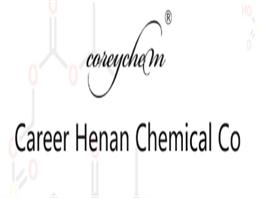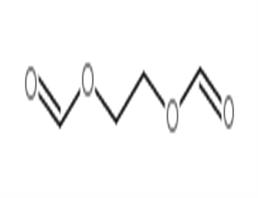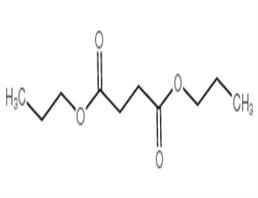
Fenoxycarb
| Price | $1 |
| Package | 1ASSAYS |
| Min. Order: | 1ASSAYS |
| Supply Ability: | 1ton |
| Update Time: | 2020-01-01 |
Product Details
| Product Name: Fenoxycarb | CAS No.: 79127-80-3 |
| EC-No.: 200-154-8 | Min. Order: 1ASSAYS |
| Purity: 95-99% | Supply Ability: 1ton |
| Release date: 2020/01/01 | |
| contact: Flora@coreychem.com |
▼
▲
Fenoxycarb Basic information
▼
▲
Product Name:
Fenoxycarb
Synonyms:
PRECISION;PRECLUDE;ETHYL 2-(4-PHENOXYPHENOXY)ETHYLAMINOFORMATE;INSEGAR;LEPTOPHOS PESTANAL 250 MG;Ethyl (2-(4-phenoxyphenoxy)ethyl)carbamate;Fenoxycarb;Shuangyangwei
CAS:
79127-80-3
MF:
C17H19NO4
MW:
301.34
EINECS:
683-267-1
Product Categories:
API intermediates
Mol File:
79127-80-3.mol

▼
▲
Fenoxycarb Chemical Properties
▼
▲
Melting point
53-54°C
Boiling point
442.47°C (rough estimate)
density
1.1222 (rough estimate)
vapor pressure
8.7 x l0-7 Pa (25 °C)
refractive index
1.5400 (estimate)
storage temp.
0-6°C
Water Solubility
6 mg l-1 (25 °C)
CAS DataBase Reference
79127-80-3(CAS DataBase Reference)
NIST Chemistry Reference
Carbamic acid, (2-(4-phenoxyphenoxy)ethyl)-, ethyl ester(79127-80-3)
EPA Substance Registry System
Carbamic acid, [2-(4-phenoxyphenoxy)ethyl]-, ethyl ester(79127-80-3)
▼
▲
Safety Information
▼
▲
HS Code
29224999
▼
▲
MSDS Information
▼
▲
Provider
Language
Ethyl (2-(4-phenoxyphenoxy)ethyl)carbamate
English
▼
▲
Fenoxycarb Usage And Synthesis
▼
▲
Description
Fenoxycarb is a carbamate insect growth regulator. Fenoxycarb is a yellow granular solid, broad-spectrum insect growth regulator, and non-neurotoxic carbamate. Fenoxycarb is almost insoluble in water but soluble and very soluble in hexane, acetone, chloroform, diethyl ether, and methanol. Fenoxycarb is a general use pesticide (GUP), meaning the user or the pesticide applicator does not need a licence. It is used to control a wide variety of insect pests, such as fire ant bait and for flea and mosquito. It is also used for the control of cockroaches, butterflies, moths, beetles, scale, and sucking insects on olives, vines, cottons, and fruits. It is also used to control these pests on stored products. As a growth regulator, fenoxycarb blocks the ability of an insect to change into the adult stage from the juvenile stage (metamorphosis). Fenoxycarb interferes with larval moulting, the periodic shedding or moulting of the old exoskeleton, and production of a new exoskeleton. Although fenoxycarb is a carbamate insecticide, it exhibits no anti-cholinesterase activity and is thus considered non-neurotoxic. It mimics the action of the juvenile hormones (JHs) on a number of physiological processes, such as moulting and reproduction in insects.
Chemical Properties
Fenoxycarb is a yellow granular solid, broad-spectrum insect growth regulator and nonneurotoxic carbamate. Fenoxycarb is almost insoluble in water, but soluble and very soluble in hexane, acetone, chloroform, diethyl ether, and methanol. Fenoxycarb is a GUP, meaning the user or the pesticide applicator does not need a license. It is used to control a wide variety of insect pests, as a fi re ant bait and for fl ea and mosquito control. It is also used for the control of cockroaches, butterfl ies, moths, beetles, scale, and sucking insects, pests of stored products. As a growth regulator, fenoxycarb blocks the ability of an insect to change into the adult stage from the juvenile stage (metamorphosis). Fenoxycarb interferes with larval molting, the periodic shedding or molting of the old exoskeleton and production of a new exoskeleton. Although fenoxycarb is a carbamate insecticide, it exhibits no anticholinesterase activity and is thus considered non-neurotoxic. It is useful for the control of fi re ants, fl eas, mosquitoes, cockroaches, moths, scale insects, and insects attacking vines, olives, cotton, and fruit. It is also used to control these pests on stored products, and is often formulated as a grit or corncob bait. It mimics the action of the juvenile hormones (JH) on a number of physiological processes, such as molting and reproduction in insects.
Uses
Fenoxycarb is mainly used to control Lepidoptera, scale insects and suckers on fruit, cotton, olives, vines and ornamentals. It is used to control Coleoptera and Lepidoptera in stored products, and cockroaches, fleas, mosquito larvae and fire ants in public health situations.
Health Hazard
Fenoxycarb is practically non-toxic to mammals after oral ingestion. The oral LD50 for rats is greater than 10,000 mg/kg and the dermal LD50 for rats is greater than 2,000 mg/ kg. Direct application of fenoxycarb on the skin of laboratory rats caused labored breathing and diarrhea in animals. Although fenoxycarb does not irritate the skin, it is an eye irritant. The liver is the primary organ affected by fenoxycarb in long-term animal studies. Prolonged period of oral exposures to rats and dogs with very low doses of fenoxycarb caused no health effects in the animals, while high concentrations caused adverse effects to the liver of rats, mice, and dogs. Reports on the teratogenicity and mutagenicity of fenoxycarb are not available in the literature.
Metabolic pathway
When the insect larvae of tobacco budworm are fed with 14C-fenoxycarb, at the time of gut purge, the whole of the radio-labeled material is excreted. The main metabolites of fenoxycarb are identified and show hydroxylation of the aromatic rings which makes the excretion easier. Cleavage of the molecule to give carboxylic acid metabolites confirms the hypothesis that the fenoxycarb is not cleaved by esterase.
Degradation
Solutions of [14C-1,4-phenoxy]fenoxycarb in aqueous buffers (pH 3, 7, 9) were maintained at 35 °C for 70 days. The compound was stable over this period (PSD, 1997). In a study to US EPA guidelines, a solution of [14C-1,4-phenoxy]fenoxycarb in sterile buffer at pH 7 and at 25 °C was irradiated with a xenon arc lamp. Light of wavelength less than 290 nm was filtered out. Irradiation was equivalent to one year of average midday sunlight at 40-50°N. Additional tests were done using acetone as a photosensitiser. Samples were analysed using LSC and HPLC methods. Little 14CO2 was evolved and 80 and 40% of the parent fenoxycarb degraded within 210 minutes in the sensitised and unsensitised samples, respectively. Seven photoproducts were identified from the unsensitised samples but only the phenol (2) was formed (see Scheme 1) in appreciable amount (12.3% of applied radioactivity after 6 hours) (PSD, 1997).
Company Profile Introduction
Established in 2014,Career Henan Chemical Co. is a manufacturerspecializing in the sale of fine chemicals.
Mainly deals in the sales of:
Pharmaceutical intermediates
OLED intermediates:
Pharmaceutical intermediates;
OLED intermediates;
You may like
Recommended supplier
| Product name | Price | Suppliers | Update time | |
|---|---|---|---|---|
| $9.90/1kg |
VIP2Y
|
Hebei Duling International Trade Co. LTD
|
2022-10-18 | |
| $0.00/25KG |
VIP4Y
|
Hebei Mojin Biotechnology Co., Ltd
|
2022-07-06 | |
| $1.00/1KG |
VIP5Y
|
Shaanxi Dideu Medichem Co. Ltd
|
2020-04-24 |
- Since: 2014-12-17
- Address: Room 702, Floor 7, Building 10, National University Science Park, High-Tech Zone, Zhengzhou City, H
INQUIRY







 China
China